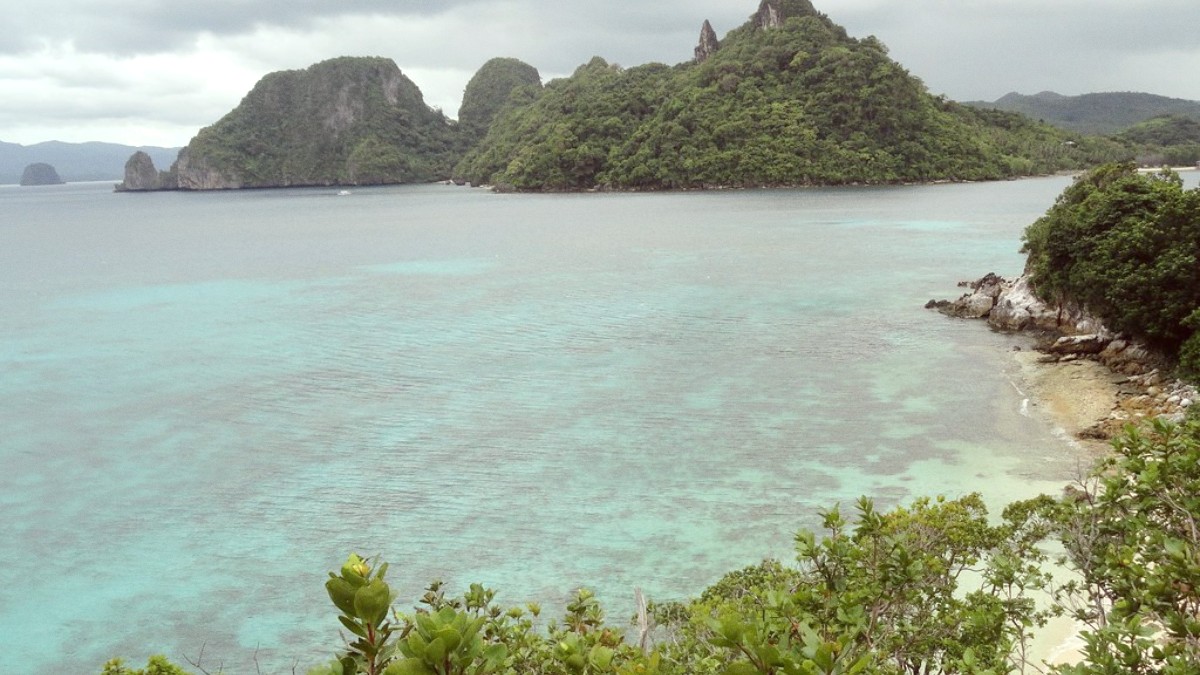
Palawan, Philippines
El Nido generally maintains warm temperatures year-round. Average daily highs range from 27°C to 32°C (81°F to 90°F). The Dry Season (November to May) has less rainfall, lower humidity, and abundant sunshine. The Wet Season (June to October) features higher rainfall and increased humidity, with typhoons also possible.
In the Dry Season, temperatures often sit between 28°C and 32°C (82°F to 90°F), with minimal rain. Humidity is lower. In the Wet Season, temperatures range from 27°C to 31°C (81°F to 88°F). Frequent rain showers occur, often heavy but usually intermittent. Humidity is high, often exceeding 80%. Sunny periods are still common.
High Season (December to April) presents the best weather for island hopping and water activities. Seas are calm, and skies are clear. The atmosphere is lively, and all tours and establishments operate fully. Crowds are larger, and prices for accommodation and flights are higher.
Wettest, fewest tourists
Significantly fewer tourists; lower accommodation and tour prices; lush, green landscapes; unique experiences without large crowds.
Higher chance of rain and rough seas; typhoons can cause disruptions (canceled flights/tours); some activities may be limited.
Transition periods
Good weather with only occasional rain; fewer crowds than high season; slightly lower prices; May can be hot, November improves.
Some rainfall possible; typhoons can still occur in November, potentially changing travel plans.
Best weather, most crowds
Ideal weather for all activities; calm seas and clear skies; lively atmosphere; all tours fully operational.
Higher prices for accommodation and flights; attractions are more crowded.
The Philippines experiences typhoons (known internationally as hurricanes or tropical cyclones). These occur notably during the wet season (June to October), though they can happen outside this period. While El Nido does not get hit as frequently as parts of Luzon, strong weather systems can still cause disruptions. These include flight cancellations and the suspension of island-hopping tours.
From June to October, the Southwest Monsoon (Habagat) brings heavy rains and stronger winds. It mainly influences the west coast of Palawan, which includes El Nido. This can result in choppy seas. From November to May, the Northeast Monsoon (Amihan) brings cooler, drier air. This makes for more pleasant weather conditions.
Always check local weather forecasts before and during your trip.
Consider comprehensive travel insurance that covers weather-related cancellations.
If traveling in wet season, book flights and tours with flexible cancellation policies.
Have backup plans for land-based activities if island hopping is suspended.
Listen to local advisories from authorities and your accommodation.
Rules vary based on your nationality and length of stay. Many nationalities can enter the Philippines without a visa for short stays.
Citizens of the United States, Canada, Australia, and the UK can enter without a visa for stays up to 30 days. This applies to tourism purposes.
For stays over 30 days or if your nationality needs a visa, obtain it from a Philippine embassy or consulate before arrival.
Costs vary significantly based on your travel style. The official currency is the Philippine Peso (PHP), also shown as ₱.
Being prepared for common concerns makes a difference. Ensure you budget for accommodation, meals, transportation, and activities.
These estimates cover basic needs. Luxury travelers' costs can exceed ₱14,000 ($238+) daily, covering premium experiences and private services. Mid-range travel costs around ₱3,900 - ₱8,500 ($66 - $144 USD).
Budget travelers' daily costs range from ₱2,100 - ₱3,400 ($36 - $58 USD), which means careful spending and prioritizing local experiences.
From hostel dorms to luxury private island resorts, options span a wide price range.
Hostel Dorm: ₱500 - ₱800. Mid-Range AC Room: ₱1,500 - ₱4,000.
Luxury Private Island Resort: ₱15,000 - ₱50,000+.
Dining options range from affordable local eateries to high-end international cuisine.
Local Eatery: ₱80 - ₱200. Mid-Range Restaurant: ₱250 - ₱600.
Fresh Seafood Dinner: ₱500 - ₱1,500+.
From local tricycles to exclusive flights, transport and activity costs vary.
Tricycle: ₱10-₱150. Island Tour: ₱1,200-₱1,800.
AirSwift Flight: ₱5,000 - ₱10,000+. Private Van: ₱5,000 - ₱7,000.
| Category | Expectation | Suggested Amount |
|---|---|---|
| Restaurants | Not strictly required, but appreciated if service charge not included. | 5-10% for good service. |
| Tour Guides/Boat Crew | Much appreciated for good service on island tours. | ₱100 - ₱300 per person. |
| Hotels (porters/housekeepers) | Small tips are appreciated. | ₱50 - ₱100. |
Being prepared for common concerns makes a difference.
Make sure all routine vaccinations (MMR, DTP, Polio) are current.
These are suggested for most travelers; they spread through contaminated food/water/fluids.
Suggested for long-term/rural travelers. These are animal or mosquito-borne diseases.
Traveler's Diarrhea
Drink only Bottled water. Avoid ice unless it's from purified water. Eat thoroughly cooked, hot food. Frequent handwashing or using Hand sanitizer is a good practice.
Dengue Fever is mosquito-borne. Use Insect repellent (DEET/picaridin). Wear long sleeves, especially at dawn/dusk. Sunburn/Heatstroke prevention includes high-SPF Reef-safe sunscreen, hats, sunglasses, and shade.
Cuts from coral or rocks can get infected. Clean wounds quickly with clean water and soap. Apply antiseptic. Consider Water shoes for protection.
El Nido has basic clinics. For serious emergencies, transfer to Puerto Princesa City (5-6 hours away) for comprehensive hospitals is often needed.
Several pharmacies in El Nido town carry basic medications and first aid supplies.
Limited. Contact your accommodation or local tour operators first for immediate aid; they often have local contacts.
El Nido is generally a safe destination. Violent crime against tourists is rare.
Tap water in El Nido is generally not safe for drinking. Always consume bottled water. Having comprehensive travel insurance is strongly suggested.
Use Filtered water for refills. Choose clean, busy food stalls. Eat freshly cooked, hot food. Be careful with unpeeled fruits or uncooked dishes.
Make sure your policy covers medical emergencies, emergency evacuation, trip cancellation/interruption, and lost luggage. Check World Nomads, SafetyWing, or Insubuy.
Keep Philippine National Police (117), Fire/Medical (911), and your embassy details. Your accommodation can also be a local contact.